Web & Video Summarizer
One of the fundamental and widely-used features of HARPA AI is its /summary command. This tool transforms any web page content into a concise format, offering options such as reports, bullet point lists, regular text, or even tweets.
Additionally, HARPA AI provides a specialized version of this tool specifically for YouTube content, aptly named /youtube-summary. This unique command is adept at extracting and condensing transcripts from YouTube videos, offering a significant time-saving advantage.
The YouTube summary command operates almost instantaneously. You do not have to pause the video. HARPA will seamlessly handle all the required transcript extraction, chunking, networking and interpreting processes in the background.
To access these commands, simply type /summary into the HARPA AI chat and click on the command you need.
# How to summarize web pages or PDFs
To begin, make sure to install Google Chrome or a Chromium-based browser and HARPA AI Chrome Extension.
- Open HARPA AI on any website by clicking the HARPA AI icon in the top right corner or by pressing Alt+A (on Windows) or ^+A (on Mac).
- In the interface, you'll find SHORT & LONG SUMMARY buttons. Click on one of them to start the summarization.
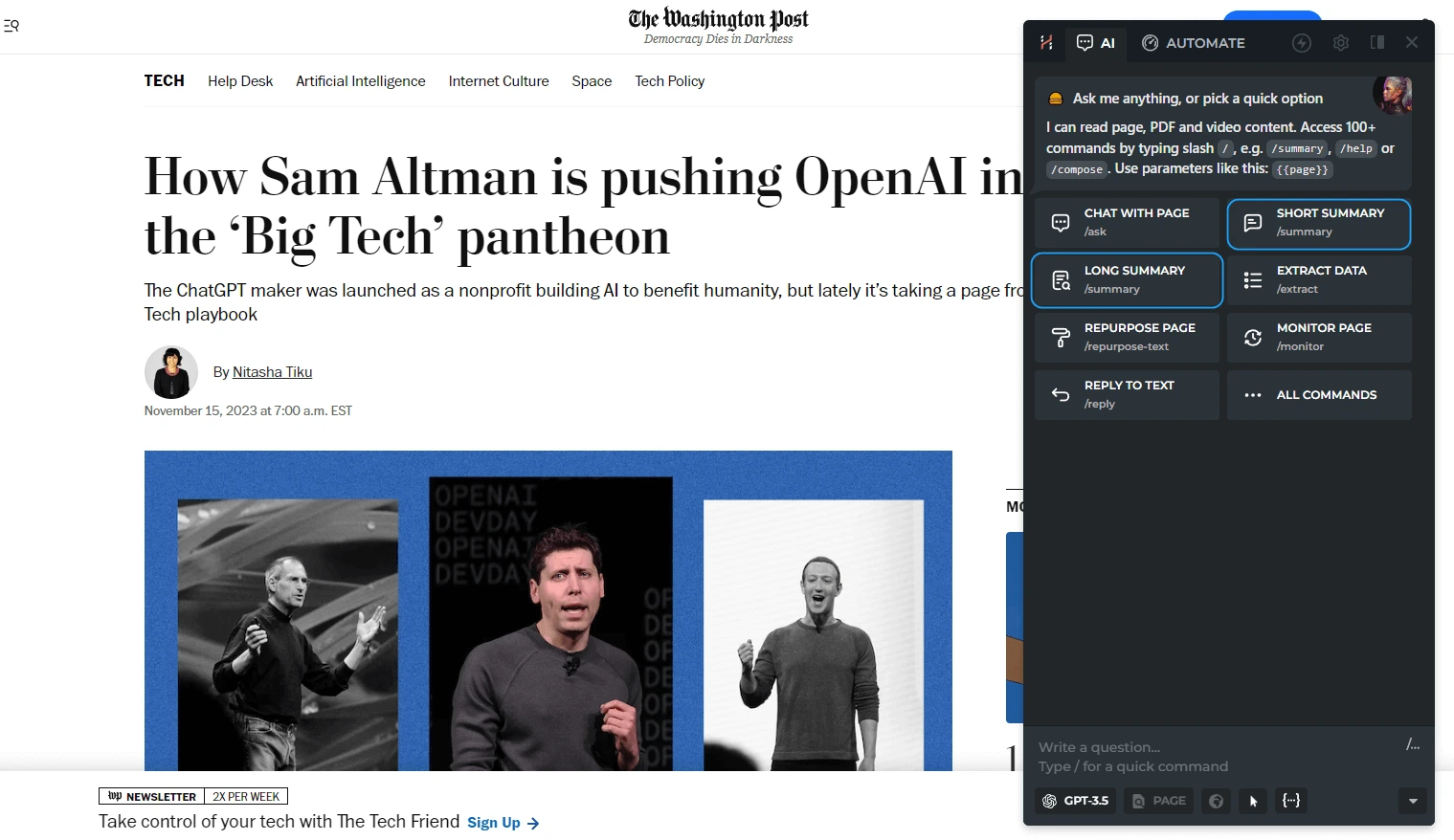
Alternatively, to bring up a list of AI commands and ChatGPT prompts, type the / symbol in the HARPA AI chat, then type /summary and click the Summary command. You can use the Up and Down arrow keys to select the command to run.
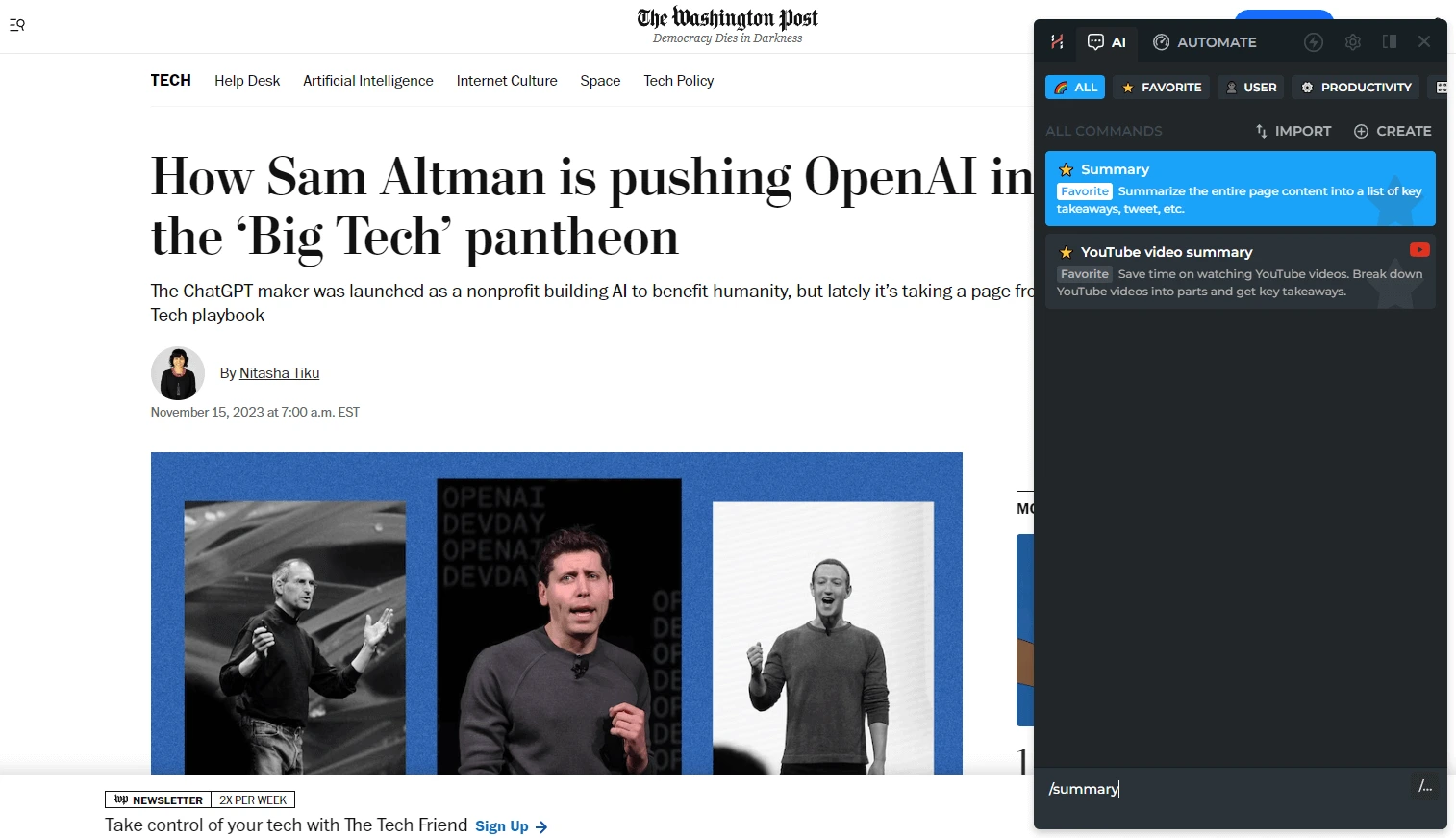
- Choose your preferred summarization option and wait while I prepare the response for you.
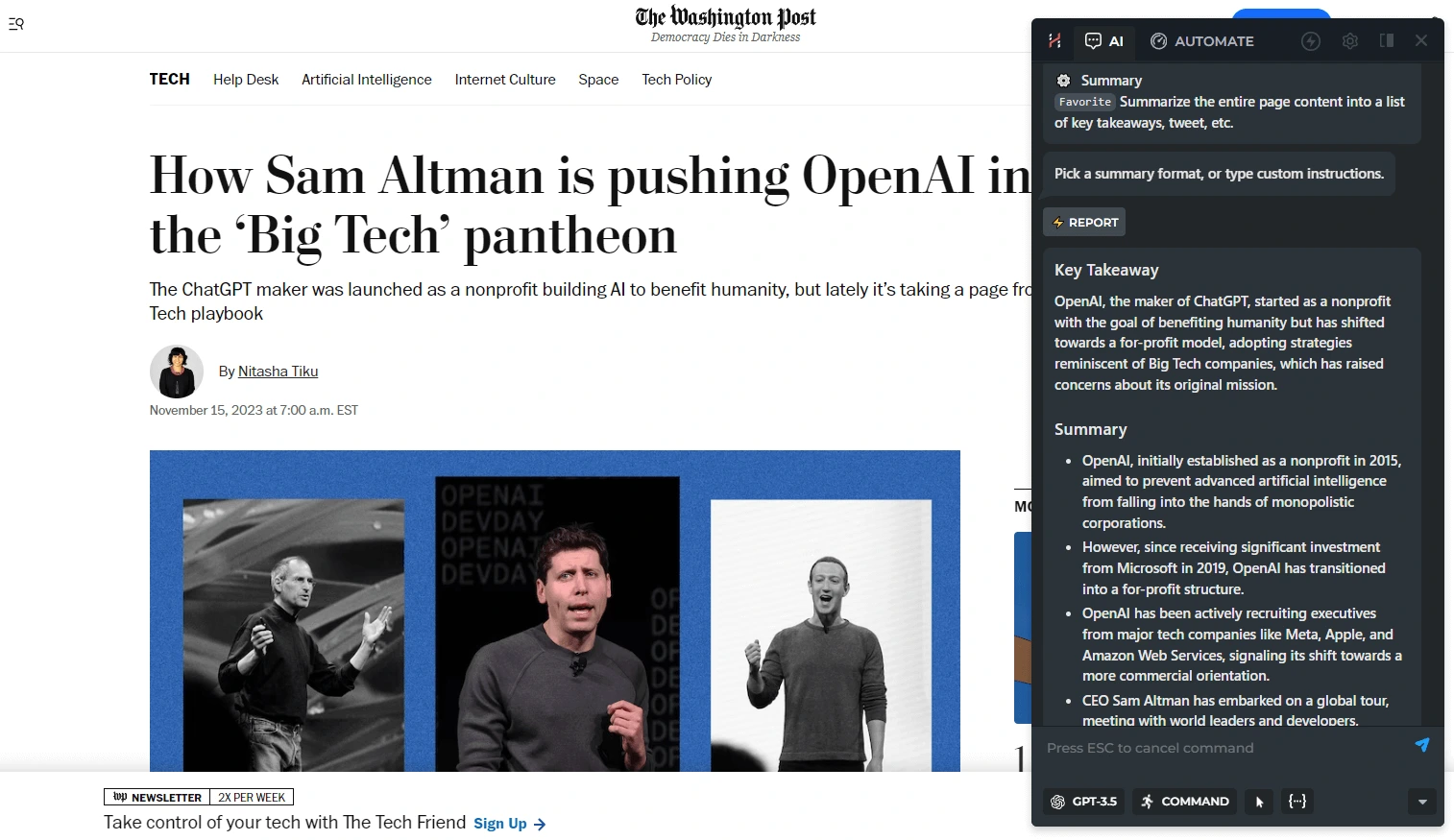
# How to Summarize PDFs
With HARPA AI, you can work with PDF files too. The files must be served from the internet, and not from your computer's file system as HARPA has no access to your local system. For example, you can upload PDFs to Google Drive, DropBox, or other cloud storage, receive them via email, or fetch from services like arxiv.org.
Next versions of the product will include a file manager that allows you to upload PDFs and work with them directly in the browser window.
# How to create YouTube video summaries
Make sure to install Google Chrome or a Chromium-based browser and HARPA AI Chrome Extension.
-
Navigate to YouTube and open any video of your preference that you'd like to convert into textual form. Whether it's a music video or a two-hour interview, the most important factor is that a transcription of the selected video is available on YouTube.
-
Find the /youtube-summary command.
- You'll see a Summarize with HARPA AI button in the interface. Click on it, and a window will open offering options for content summarization.
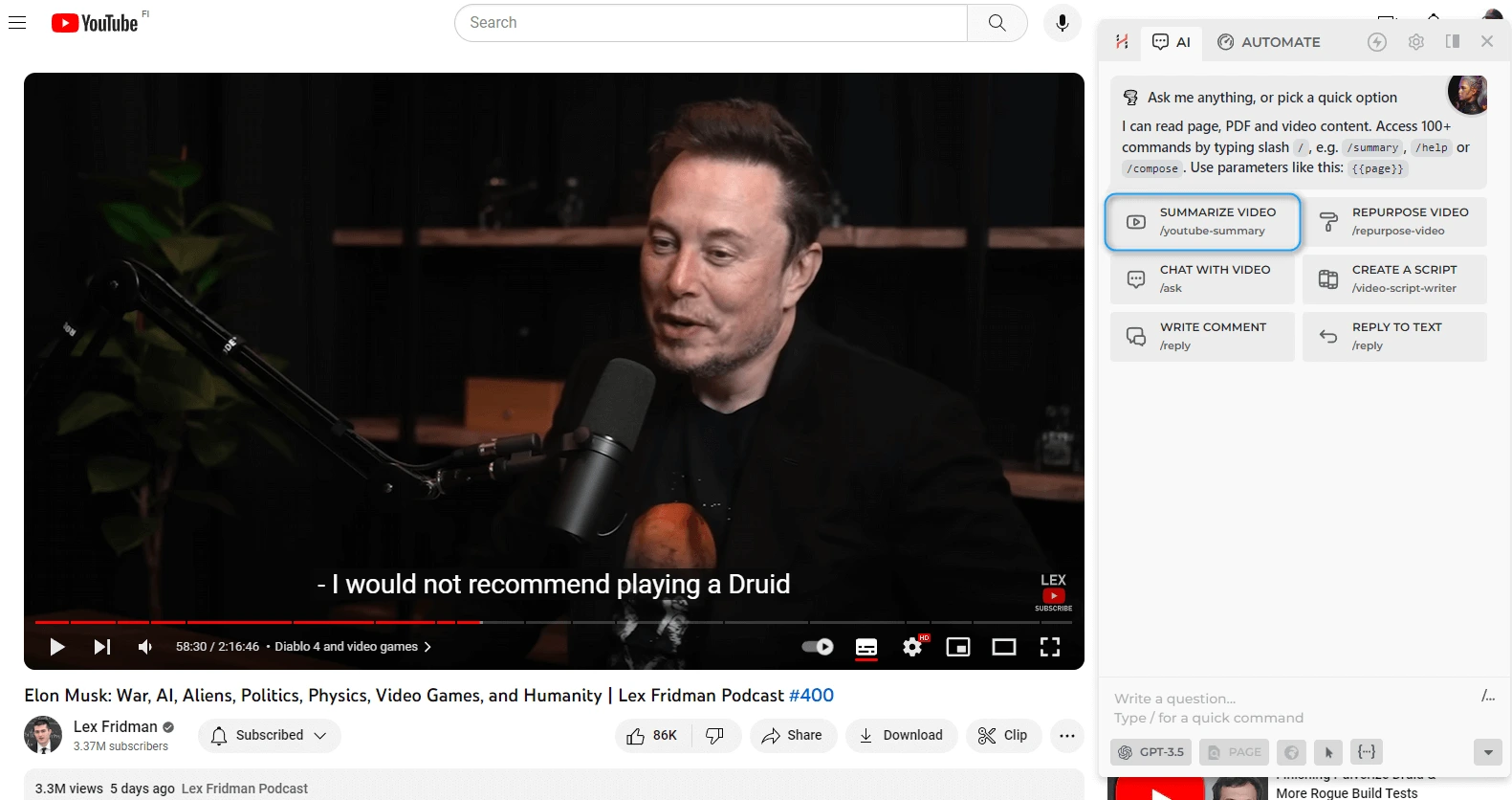
- You can also open HARPA AI by clicking its icon in the top right corner or pressing Alt+A (on Windows) or ^+A (on Mac), and then see /youtube-summary in the quick access menu while on a YouTube page.
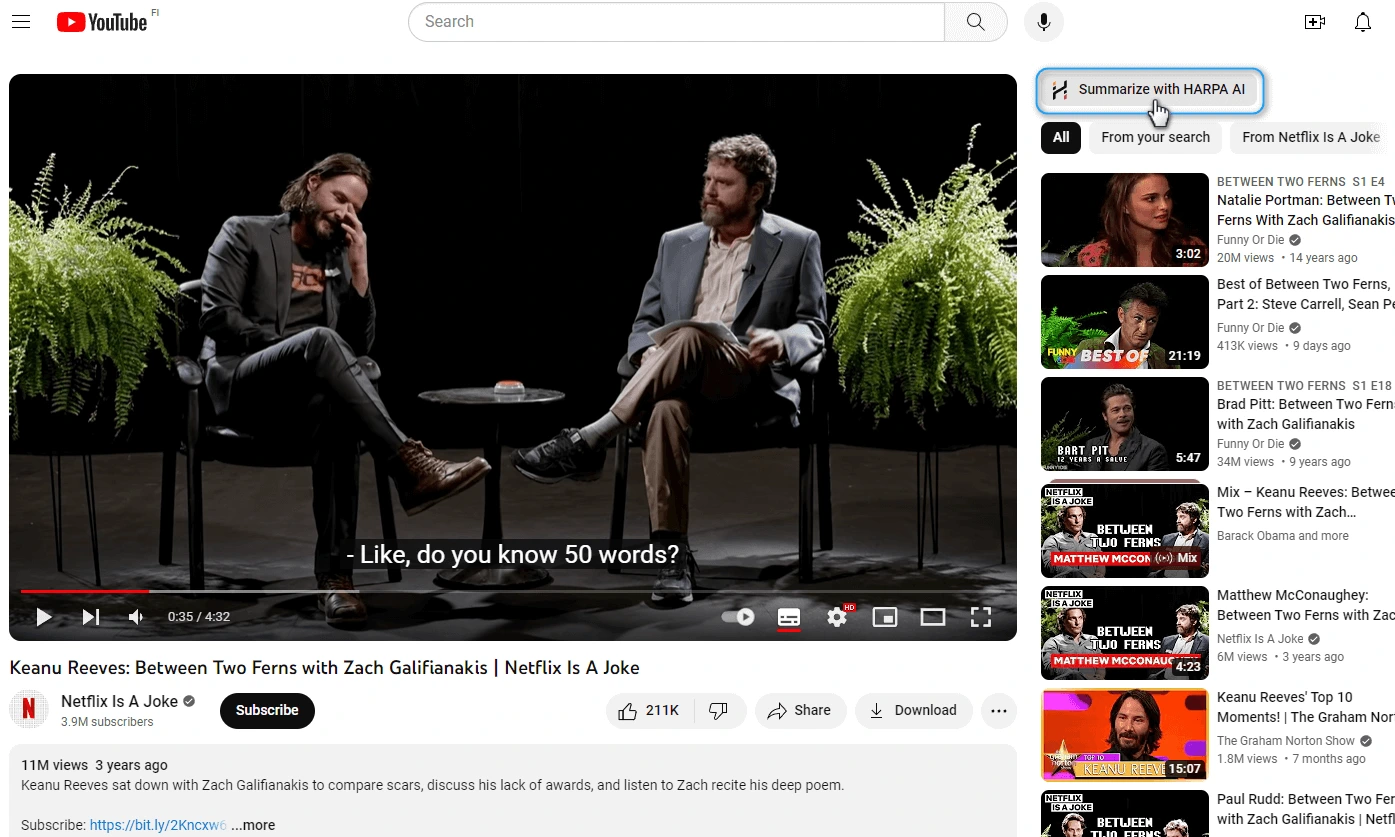
- Use the chat interface in HARPA to type /youtube and click the YouTube video summary command. You can use Up and Down arrow-keys to select the command to run.
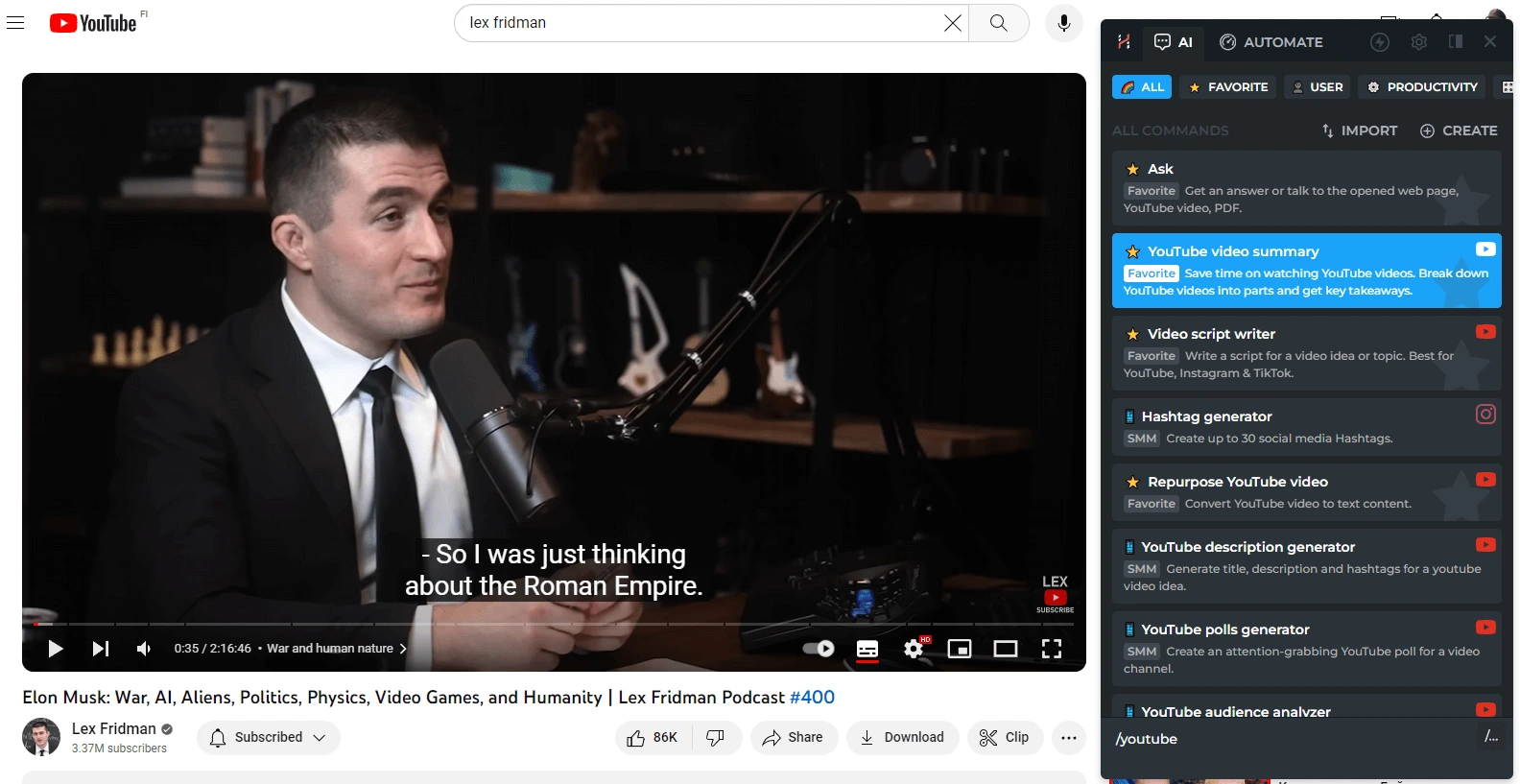
-
Sit back, relax, and enjoy the power of AI summarizing the video for you:
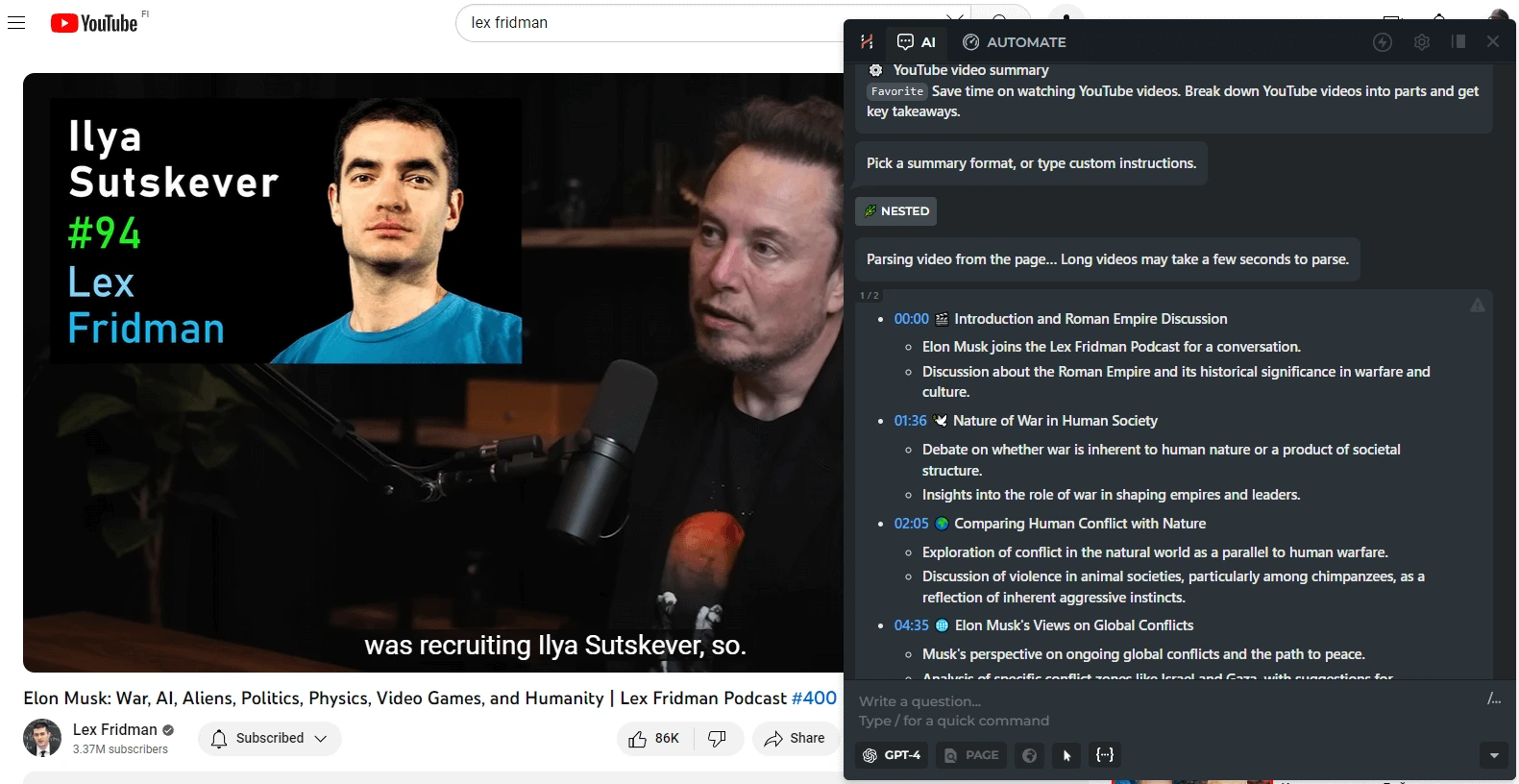
Long video transcripts are broken down into chunks and the summary is provided in segments. This is due to the token limit restriction imposed by ChatGPT.
- Please feel free to click the ADD COMMENT button; doing so will contribute to the growth of HARPA AI. Posting a comment will happen automatically, and you won't need to take any additional steps.
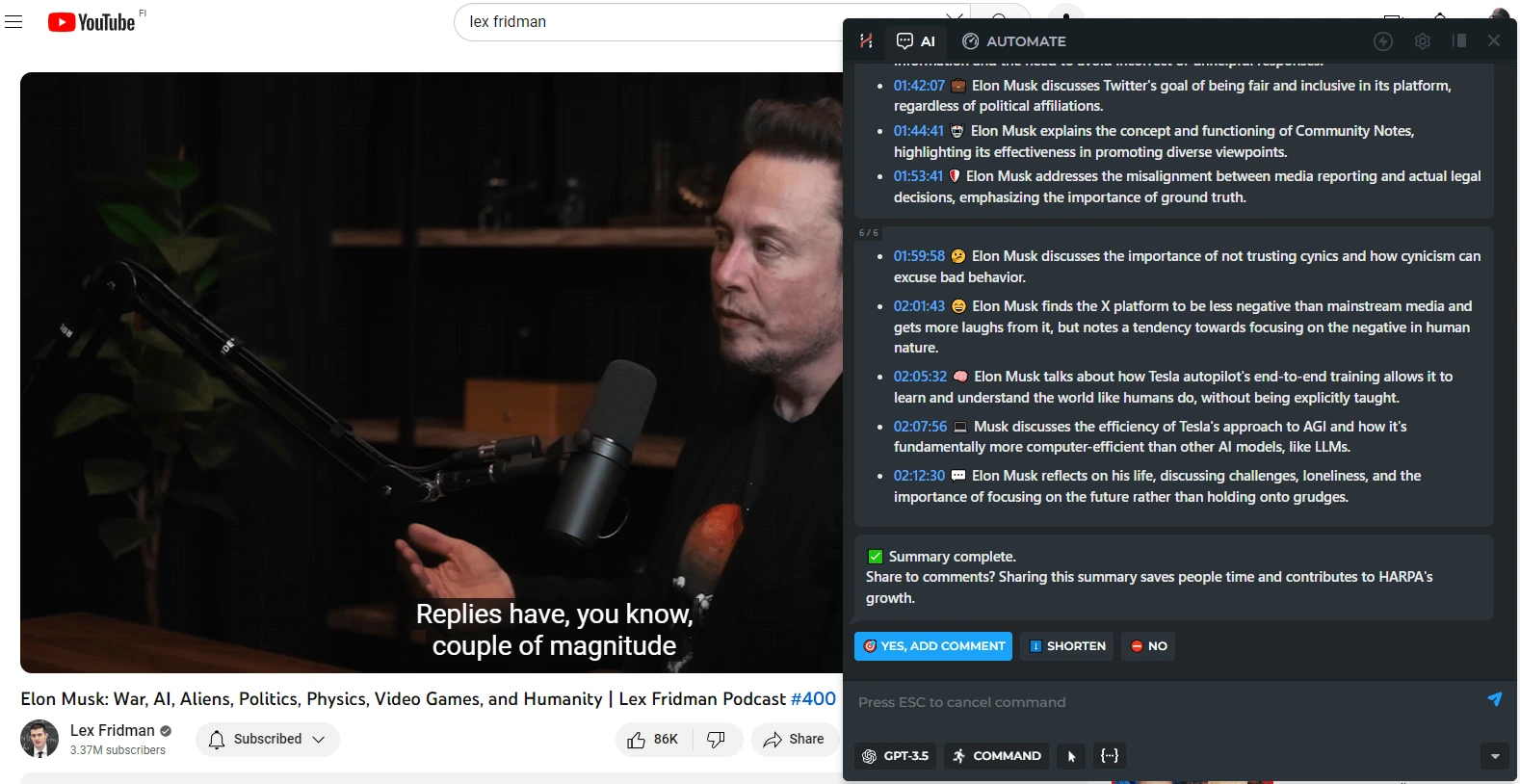
# Limitations & Troubleshooting
- Videos that have no transcripts cannot be processed to summaries. You will be promptly notified by HARPA if the transcript is unavailable.
- ChatGPT models are restricted and can not process explicit content or obscene language, vulgar expressions, and so on. This slightly limits the functionality of this feature, but also makes the output highly amusing as AI tries to circumvent awkward phrasing. If you ask a question on a controversial topic, GPT-4 will respond with an answer, but GPT-4o-mini might not answer at all if it considers the topic problematic.
# Links for further reading
All rights reserved © HARPA AI TECHNOLOGIES LLC, 2021 — 2026
Designed and engineered in Finland 🇫🇮

